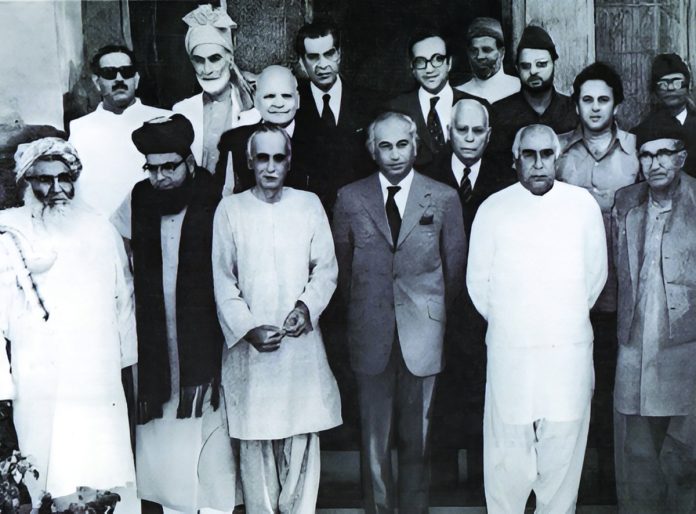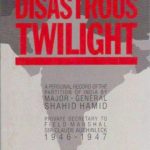The 1973 Constitution marked a major turning point in Pakistan’s political evolution. It introduced a parliamentary system where the Prime Minister was designated as the head of the executive, while the President assumed a ceremonial role, symbolizing national unity.
The drafting and ratification process of the Constitution reflected an effort to create a document that genuinely captured the will and aspirations of the Pakistani people. For months, the country’s leading legal minds, constitutional experts, political leaders, and respected religious scholars worked together to craft a truly representative constitution. Unlike earlier efforts that were often piecemeal or limited in scope, this time the objective was clear: to develop a complete, well-rounded document that would cover governance, fundamental rights, commerce, finances, civil liberties, and the delicate separation of powers between institutions.
In developing the Constitution, ideas from both Islamic teachings on civil rights and Western political philosophy, particularly the principles of John Locke, were thoughtfully interwoven. The final result was a fine balance between tradition and modernity. It introduced a bicameral Parliament consisting of a National Assembly, which represented the will of the people, and a Senate, which ensured equal representation of all provinces. Islam was declared the state religion, and important civil liberties such as freedom of speech, religion, press, movement, thought, and association were formally protected under the Fundamental Rights section.
The Constitution was not merely about political arrangements. It was also a reflection of a deep settlement between conservative Islamic values and liberal humanist ideals, particularly advocated by Bhutto’s Pakistan People’s Party. On 20 October 1972, leaders of all political parties revived the draft and agreed to its adoption. The document was ratified unanimously by the National Assembly on 19 April 1973, and it fully came into effect on 14 August 1973, after which Zulfikar Ali Bhutto, stepping down as President, officially assumed office as Prime Minister, while Fazal Elahi Chaudhry became President.
The structure of the 1973 Constitution introduced several innovations compared to earlier documents. Unlike the constitutions of 1956 and 1962, this new constitution provided strong security guarantees to every citizen. The first part of the document defined the State itself and enshrined core principles such as life, liberty, equality, prohibition of slavery, protection of cultural and linguistic rights, and safeguards concerning arrest, detention, and discrimination. Drawing from British Common Law traditions, the Constitution’s due process clause ensured that no law could override fundamental rights, with courts empowered to strike down any violations. In contrast to the models adopted by India and Bangladesh, Pakistan’s Constitution was more cautious and emphasized balancing competing interests. It recognized Pakistan as a federation of four provinces and redefined the country’s geography, while explicitly linking governance to Islamic values. It introduced a federal system based on separation of powers, strong checks and balances, and detailed the roles and eligibility criteria for public offices. It specifically mandated that only a Muslim of at least forty-five years of age could become President or Prime Minister, although no religious restrictions were imposed for other key positions like provincial governors and Chief Ministers.
One of the most innovative aspects was the establishment of the Council of Common Interests, composed of the Chief Ministers of each province and an equal number of federal ministers nominated by the Prime Minister. This council was tasked with regulating important policies related to resource sharing and resolving inter-provincial disputes, particularly over issues like water distribution etc. Similarly, the National Finance Commission was created to ensure equitable distribution of revenues between the federation and the provinces, highlighting the Constitution’s commitment to provincial autonomy and balanced federalism.
In terms of societal aspirations, the Constitution promoted the Islamic way of life, encouraged the development of local governments, guaranteed full participation of women in national affairs, protected minority rights, and emphasized the goal of social and economic well-being for all citizens. Urdu was declared the national language, English was retained for the time as the official language, and the preservation of regional languages and cultures was also formally recognized.
Religion played a defining role under the Constitution. It declared Pakistan the Islamic Republic, and committed the state to ensuring that all laws conformed to Islamic teachings as laid down in the Quran and Sunnah. Arabic language instruction, the correct publication of the holy Quran, and the organization of religious institutions like masajids, zakat, and waqf were made constitutional responsibilities.
Practices such as gambling, alcohol consumption, prostitution, and pornography were explicitly prohibited. Furthermore, to guide the Islamization of legislation and governance, the Constitution established the Council of Islamic Ideology, an advisory body tasked with recommending measures to bring laws into conformity with Islamic commands. It also provided a formal constitutional definition of a Muslim and, through the Second Amendment in 1974, declared the Qadyanies (Ahmadiyya community) as non-Muslim. Later, the Fourth Amendment ensured reserved seats for non-Muslim minorities in the National Assembly, balancing religious identity with minority protection.
Finally, the Constitution was organized into several parts and schedules, each dealing with specific aspects of state affairs, ranging from fundamental rights to emergency provisions, financial matters, judiciary setup, elections, and the mechanisms for constitutional amendment. In its entirety, the 1973 Constitution of Pakistan remains a living document, reflecting both the ideals and compromises that shaped the nation’s early democratic evolution. Despite facing many amendments, suspensions, and challenges over the decades, it continues to serve as the bedrock of Pakistan’s political and legal system, symbolizing the collective will of its people for democracy, federalism, Islamic identity, and constitutional governance.
Continue…….







